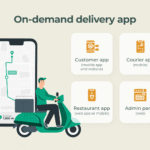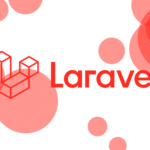The Real Meaning of “Growth” in Startups
Growth is often the most misunderstood word in the startup world. Many founders chase funding or quick traction instead of building long-term value. True growth means creating a repeatable, scalable system that delivers measurable results.
According to CB Insights, 38 percent of startups fail because they run out of cash, and 35 percent fail due to lack of market demand. This shows that growth without validation is unsustainable.
A Startup Genome study found that structured scaling frameworks increase startup success rates by 3.5 times. Growth, therefore, must be designed strategically, not improvised.
This article explores verified startup growth strategies for 2025, showing how successful founders validate markets, build scalable models, and use data-driven frameworks to achieve sustainable expansion.
The Foundation: Validating the Market Before Scaling
Before scaling, every startup must confirm that real demand exists. Market validation prevents wasted effort, poor unit economics, and premature scaling that limits sustainable growth.
Key Insights (Verified Data):
34 percent of startups fail due to missing product-market fit, as noted by Harvard Business School Online.
Even after finding PMF, 78 percent struggle to scale, according to McKinsey & Company.
Early validation can cut capital waste by up to 50 percent, reports CB Insights.
Proven validation methods include customer interviews, MVP testing, and CAC-to-LTV tracking.
Scaling without validation often leads to high burn rates and weak investor confidence.
Building a Scalable Business Model
A scalable business model enables revenue to grow faster than operating costs. It helps startups expand efficiently without losing product quality or profitability.
Understanding the Difference Between Growth and Scalability
Growth simply means adding revenue by increasing inputs like funding or manpower. Scalability means generating more revenue per unit of input through optimized systems and automation.
According to the SaaS Capital Growth Rate Benchmarks 2025, the median annual growth rate for private B2B SaaS companies is around 25 percent, while bootstrapped ones grow at 23 percent. The same study shows that companies with Net Revenue Retention (NRR) above 100 percent scale significantly faster than those below that threshold.
Frameworks That Work: Lean Canvas vs Business Model Canvas
The Lean Canvas is best suited for early validation — testing customer problems, proposed solutions, and key metrics. Once the product-market fit is achieved, the Business Model Canvas becomes more effective for refining revenue streams, partnerships, and long-term cost efficiency.
A recent study published in ScienceDirect found that digital market-validation tools improve early-stage business model reliability and reduce time to scale.
Benchmarks from Successful SaaS and Marketplace Startups
The Benchmarkit 2025 SaaS Report shows the median year-over-year growth rate for B2B SaaS startups is about 26 percent.
The ProductLed Growth Benchmark Report 2025 reveals that 91 percent of SaaS companies plan to increase their investment in product-led growth initiatives.
Meanwhile, the Maxio SaaS Pricing Trends Report 2025 highlights the rapid adoption of usage-based pricing models as startups look for scalable, customer-aligned revenue streams.
Product-Led Growth (PLG): Let the Product Drive Adoption
Product-Led Growth (PLG) is a model where the product itself becomes the main driver of user acquisition and expansion. Instead of relying heavily on marketing or sales, startups design their product experience so well that users naturally adopt, upgrade, and advocate for it.
PLG companies focus on simplicity, quick onboarding, and instant value. This approach reduces customer acquisition costs while improving lifetime value. When users experience value before paying, conversion happens organically.
According to the ProductLed Growth Benchmarks Report 2025, 91 percent of SaaS companies plan to increase PLG investments this year.
A study by SevenAtoms found that product-led companies grow nearly 2.5 times faster than those using traditional sales models.
Key PLG Principles:
Focus on delivering value in the first user experience.
Optimize for self-serve onboarding and easy product discovery.
Track metrics such as activation rate, weekly active users, and expansion revenue.
Emerging trends from Product-Led Alliance highlight the growing importance of value-based pricing, AI-driven personalization, and product operations teams to sustain scalable PLG models.
In essence, PLG is not just a growth tactic. It is a mindset where the product becomes both the salesperson and the marketing engine.
Marketing Engine: Data-Driven Growth Loops
A scalable startup doesn’t rely on one-time campaigns. It builds a marketing engine a repeatable system that attracts, converts, and retains customers through measurable feedback loops. Each interaction generates data that powers the next decision, turning marketing into a continuous optimization process.
Data-driven growth loops integrate content, performance marketing, and customer retention analytics to compound results over time. Instead of linear funnels, startups use loops, where every new user contributes to acquiring the next.
According to the HubSpot State of Marketing Report 2025, data-driven campaigns deliver up to 20 % higher ROI than traditional ad-centric strategies. The report also shows that businesses leveraging automation and customer insights see twice the conversion rate compared to those using manual processes.
Examples of Effective Growth Loops:
Referral loops: Dropbox grew 3900 % in 15 months using referral incentives (source: FirstRound Review).
Content loops: Startups publishing consistent thought-leadership content gain 67 % more leads per month, according to Demand Metric.
Retention loops: Companies analyzing churn data monthly improve LTV by 30 %, notes ProfitWell Benchmarks.
Modern startups also use predictive analytics and AI-driven personalization to identify patterns before they impact growth. This proactive approach allows marketers to shift resources from guesswork to precision, ensuring every dollar spent contributes to compounding returns.
In short, the strongest marketing engines don’t depend on virality — they rely on measurable systems that continuously learn, improve, and expand their impact.
Customer Retention: The Overlooked Growth Lever
Retention drives long-term growth more efficiently than constant acquisition. Loyal customers generate predictable revenue, lower marketing costs, and strengthen brand advocacy. According to the Mixpanel Product Benchmark Report 2025, companies with higher retention grow 1.8 times faster, while the ProfitWell Retention Report 2025 shows a 5 percent retention lift can raise profits by up to 95 percent.
Quick Retention Wins:
Monitor NPS and user satisfaction trends.
Detect churn early using data signals.
Keep users engaged through community and loyalty programs.
Provide ongoing onboarding and education to reinforce value.
Startups that focus on retention grow consistently because happy customers stay longer and bring others along.
Funding and Financial Strategy for Sustainable Growth
Smart funding decisions shape the long-term health of any startup. Growth depends not only on raising capital but also on managing it efficiently. Founders who plan their funding around real performance data create sustainable businesses instead of chasing valuations.
According to the KPMG Venture Pulse Report Q3 2025, global venture investment reached US $120.7 billion across 7,579 deals, marking a steady recovery from last year’s slowdown. A separate Bain & Company analysis reported that Q1 2025 saw US $131 billion in VC funding, the highest in ten quarters, with investors focusing on profitability and efficient capital use. Meanwhile, Axios research revealed that AI startups captured 53 percent of all global VC dollars in the first half of 2025.
Smart Financial Practices:
Track burn multiple and maintain at least 12 months of cash runway.
Allocate funds to validated growth channels backed by real metrics.
Explore revenue-based financing or convertible notes to reduce equity dilution.
Re-evaluate budgets quarterly to align spending with performance outcomes.
Startups that treat funding as a tool rather than a trophy build resilience. Sustainable financial discipline enables founders to scale confidently and attract long-term investor trust.
Talent and Culture as Growth Catalysts
A strong team and culture form the backbone of sustainable startup growth. Technology, funding, and strategy mean little without people who are motivated, aligned, and accountable to a shared vision. The best startups scale not just through hiring more people but by building cultures that empower them to perform.
Research by the PwC Future of Work Report 2025 shows that 74 percent of executives believe workforce adaptability is now a top priority for organizational growth. Similarly, the LinkedIn Global Talent Trends Report 2025 highlights that companies with strong employee engagement experience 21 percent higher profitability and significantly lower turnover.
Building a Growth-Ready Culture:
Hire for problem-solving mindset, not just technical skill.
Create a feedback-rich environment that promotes innovation and accountability.
Encourage cross-functional collaboration to speed up decision-making.
Invest in continuous learning to prepare teams for evolving roles.
Maintain transparency in goals, progress, and leadership communication.
According to the Deloitte Human Capital Trends 2025, high-performing organizations prioritize employee trust and purpose as key growth accelerators. When culture aligns with business goals, talent becomes the most scalable advantage a startup can have.
Growth Hacking vs. Sustainable Growth
Growth hacking is often seen as the fastest way to scale, but quick hacks rarely create lasting success. Sustainable growth, on the other hand, focuses on building long-term systems that keep attracting, converting, and retaining users without constant reinvention.
The Harvard Business Review notes that startups relying solely on one-time hacks experience short-lived traction and unpredictable user retention. In contrast, companies that combine experimentation with a clear strategy grow 2.6 times faster on average, according to data from the McKinsey Growth Playbook 2025.
Sustainable Growth Frameworks:
Build data-driven marketing systems instead of isolated tactics.
Focus on customer retention and recurring value delivery.
Use controlled experimentation rather than random A/B tests.
Invest in brand trust and product experience over short-term metrics.
A smart founder uses growth hacks to test ideas but builds scalable systems to sustain them. True growth is not about viral spikes; it’s about consistent value creation supported by a repeatable process and measurable outcomes.
Global Expansion Strategies for Startups
Global expansion opens powerful growth opportunities but adds legal, operational, and cultural challenges. The smartest startups prepare early by validating demand, understanding regulations, and adapting operations to local markets.
The OECD Financing SMEs and Entrepreneurs 2024 Scoreboard reports that access to international capital and digital trade platforms has helped small firms scale globally despite slower funding cycles. The World Bank Business Ready (B-READY) 2024 dataset shows that countries with streamlined business regulations allow startups to establish operations up to 40 percent faster. Meanwhile, the KPMG Global Tech Report 2024 finds that tech-driven firms expanding with data-led strategies achieve 35 percent faster revenue growth than those focusing solely on domestic markets.
Key Steps for Global Readiness:
Begin with a regional pilot to validate product-market fit.
Research local tax, labor, and compliance laws before entry.
Form regional partnerships to build trust and accelerate market access.
Localize pricing, onboarding, and content to match buyer expectations.
Build distributed teams to manage cross-time-zone operations.
Global expansion works best when ambition meets preparation. Founders who scale with verified data and local insight achieve faster and more sustainable international growth.
Measuring Growth: The Metrics That Matter
Growth without measurement is guesswork. Tracking the right metrics helps founders identify performance gaps, improve capital efficiency, and sustain long-term momentum.
Metric | What It Measures | Healthy Range (2025) | Why It Matters |
|---|
Monthly Recurring Revenue (MRR) | Predictable monthly income stream | Consistent 8–12 % quarterly growth | Indicates revenue stability and scalability |
Net Revenue Retention (NRR) | Expansion vs. churn across existing users | 105 – 125 % | Higher NRR means strong product value and retention |
Customer Acquisition Cost (CAC) Payback | Months needed to recover acquisition cost | ≤ 12 months | Shorter payback equals faster capital recycling |
Burn Multiple | Efficiency of revenue growth vs. cash burn | 1.0 – 1.5 × | Lower ratio reflects efficient use of funding |
Gross Margin | Profit after cost of service delivery | 70 – 80 % | Shows operational health and pricing strength |
Monthly Churn Rate | Percentage of users lost each month | < 3 % | Low churn signals product-market fit |
North Star Metric | Core value metric tied to user success | Varies by model | Keeps teams aligned on meaningful outcomes |
Pro Tip:
Use dashboards to monitor these metrics weekly, not quarterly. Small fluctuations often reveal deeper issues before they affect cash flow or retention.
Future of Startup Growth: AI, Automation & Global Collaboration
The future of startup growth lies in artificial intelligence, automation, and global collaboration. Startups adopting these technologies early can scale faster, make smarter decisions, and operate efficiently. The McKinsey Global AI Report 2025 reveals that AI-driven organizations achieve 20 percent higher EBITDA margins, while the Deloitte Global Human Capital Trends 2025 shows that 79 percent of companies use automation to boost human productivity rather than replace jobs.
Key Drivers of the Next Growth Era:
AI-powered decision-making: Real-time analytics improve pricing, marketing, and customer support efficiency.
Automation at scale: Streamlined workflows cut operational costs by up to 30 percent.
Global talent collaboration: Remote teams across time zones reduce hiring friction and expand innovation capacity.
Data-driven personalization: Machine learning enhances user engagement and retention.
The future belongs to startups that blend technology with human creativity. Founders who embrace AI and global collaboration not only scale faster but also build adaptive, future-ready organizations capable of thriving in any market shift.













